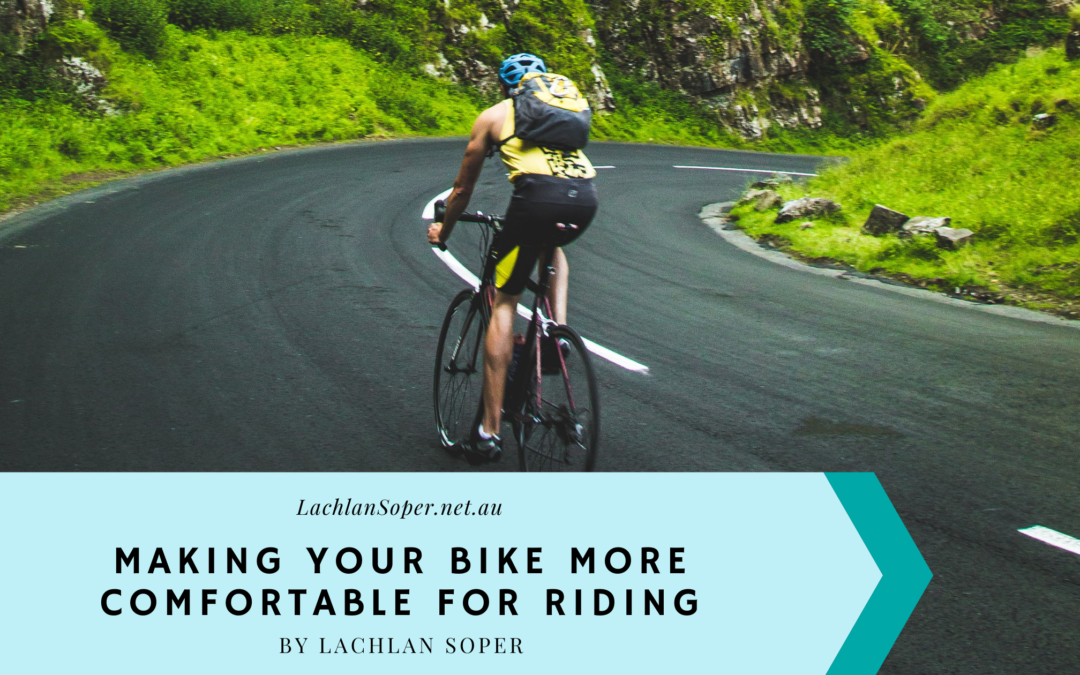As your love for cycling grows, you’ll be more likely to take on tougher and longer rides. While these are without a doubt fun and a great adventure, a long ride can easily get uncomfortable. Cycling long distances can lead to a very sore backside, back, achey legs and neck and even arms. But it doesn’t need to. To avoid having an uncomfortable bike ride, and make your ride experience even more enjoyable, follow these tips below!
Start With the Saddle
A sore backside is a telltale sign that you may need to adjust your bike to make it more comfortable. When your bike is secure in an upright position, take a seat and check the tilt of your seat. To ensure it’s at the correct adjustment, start pedalling backwards hands-free. If you feel like you’re sliding forward or backward, adjust it until you’re correctly balanced and centred. Staying centred will ensure you won’t have to push or pull more on the handlebars and it puts less stress on your body.
It could also be helpful to replace the saddle with one that is better shaped for your body – for this it’s often wise to do some research on the internet, ask some friends who cycle regularly and then ask an experienced helping hand at a good bike shop.
Seat Height
Check if the height of the saddle is the best fit for you by checking if your legs nearly straight, but not all the way, at the bottom of your pedal strokes as they should be. Wind your pedals backwards to their lowest position (pointing straight to the ground), with your bike stationary sit on the seat and put the heel of your foot on the pedal. The knee should not be locked out, fully straight, but have just the subtlest of bends in it. You get maximum power from your thigh muscles when your knee is nearly in full extension.
Handlebar Height
The height of your handlebars is just as important as the saddle. The best time to readjust the handlebars is when you first buy your new bike. Many people make the mistake of immediately discarding all the spacers and letting the stem slam down, creating a huge drop between the saddle and the bars. The pros on TV may all look like this, but remember they are not riding for comfort (although with riding 4-8 hours a day they’d want to be somewhat comfortable), they are riding to go fast. So for the pros being as aerodynamic as possible, with the head almost as low as the lower back means they can ride and race faster. For mere mortals, a huge drop between the saddle and the bars, when you’re not flexible enough, can cause pain in your hamstrings and lower back (being over flexed) and your neck (being overextended) while you’re cycling. You can also feel a lot of pressure on your arms and wrists. To avoid this, take advantage of the spacers to raise the handlebars. Just a centimetre or two can make all the difference for a more comfortable ride. And, if that’s not enough you could possibly invert (flip over) the headstem to a higher angle.
And if you feel you want an even more comfortable (elevated) handlebar position, ask the bike shop to fit (or order in) a headstem with a more generous upwards angle. All these upward adjustments to the handlebars, will likely mean that your riding position is less aerodynamic, and consequently you’ll be working somewhat harder into the wind, but it’s important that your bike is comfortable, because if you have a “fast” bike that is uncomfortable, at some point you may well give up cycling.
Check Your Brake Reach
A small adjustment that can make a big difference while you’re cycling is the brake reach. Having smaller hands can make it a struggle reaching for the brake. Not only does this make your hands sore and cramped up, but it can mean not feeling completely in control while braking. Most brake levers on newer bikes come from the factory set as far out as you can get them. However, it is possible to adjust them to be in better control while riding.
Stretch Before and After Your Ride
While you can make all the adjustments to your bike as necessary, you may be uncomfortable if you do not stretch properly. My personal preferences (and this is influenced a lot by my injury patterns) are to do back arches and cat stretches. Back arches involve a push-up-like motion, however with your pelvis bones on the ground, creating an arc of extension in the lower back. The cat stretches keep your knees and hands in exactly the same position as the back arches, with your bottom swinging up from the back extension position at ground level, over the knees to rest over your feet (putting your back into flexion). Consider also taking a few minutes to stretch your hamstrings, quadriceps hip flexors and buttocks.
When going on long rides, you can often be in relatively the same position on the bike for prolonged periods, so if you have a cafe stop, consider doing the stretches which loosen you up the most while you wait for your coffee.
Voila – a more comfortable, hopefully really comfortable, ride. This will enhance the pleasure as you ride, chat with friends and family and enjoy all the beautiful sights on the ride.
